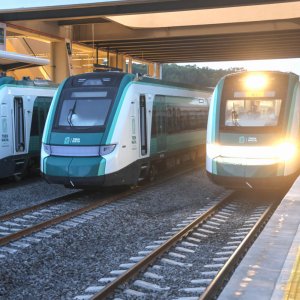
Central America to Connect Railway with Mexico’s Mayan Train
 By Fernando Mares | Journalist & Industry Analyst -
Fri, 09/30/2022 - 15:21
By Fernando Mares | Journalist & Industry Analyst -
Fri, 09/30/2022 - 15:21
The construction of the Mayan Train has created high expectations regarding the development of Mexico’s southeast, since the project is intended to foster tourism in the area and transport goods. Some Central American countries believe that they could also benefit from the train and are developing projects to form links.
Dante Mossi, Chief Executive, Central American Bank for Economic Integration (CABEI), announced that Central American countries plan to develop a railway project to connect the region with the Mayan Train. The states aim to develop a railway system from Panama to the southern border of Mexico, where they will develop a connection with the Mayan Train. The project is expected to require an investment of over US$15 billion.
In April 2022, Mexico’s Minister of Finance, Rogelio Ramírez de la O, said that the Mayan Train would link to the Isthmus of Tehuantepec and Guatemala to foster development in both Mexico’s southeast and Central America. During the 62nd Assembly of Central Banks Governors of the Central American Bank for Economic Integration (CABEI), Ramírez de la O stressed that the best way to connect the region is through a railway. Mossi agreed: “The Mayan Train is not just a train, it is a social development and integration project. I believe that we have learned much from it. We previously saw it as an infrastructure project, but it goes beyond this.”
According to Mossi, the project aims to replicate the benefits of the Mayan Train in Central America. Therefore, CABEI can finance half of the project, but the remaining resources must have come from governments and private companies. It is expected that the project will be developed under a public-private association (APP) scheme, as most of the projects developed in the region are carried out. “Central America does not have that many resources. Therefore, most of the projects are developed under an APP scheme: the government allocates part of the resources and they look for a private player to source the rest of the funding,” Mossi added.
According to Mossi, half of the infrastructure projects developed in Central America are financed by CABEI. He added that there are projects beyond transportation infrastructure, as CABEI is planning to develop gas and energy-related projects between Mexico and Guatemala.
CABEI is a financial institution whose main objective is to promote economic integration as well as balanced economic and social development in the Central American region. Mexico is the third-largest stakeholder in CABEI with a total injection of resources worth US$521 million since 1992.
















